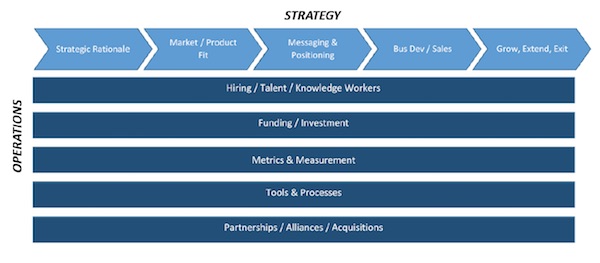Our dedication to Racial Equality and Social Justice (RESJ) spans decades. Learn more about our RESJ Initiative
Hurdles to Avoid When Entering the US Market

The decision to expand geographically is not one taken lightly by any company. When thinking about entering the US market companies should make this decision with a great deal of research and pre-work. To our surprise, the majority do not. Companies that are successful in their local foreign markets believe that similar buying behaviors exist with US customers. This puts the initial focus on sales activities. Instead of using the initial stage to prepare the company’s products and messaging for the US market customer, foreign companies are out trying to get customers to justify their decision to expand. For those that are lucky to get an initial customer signed up don’t be fooled, the second or third might not be that easy.
To succeed in the US market puts you in an elite group because most companies coming to the US market fail or limp along before they pack up and head home. We have studied successful and unsuccessful attempts and have identified what it takes to be successful in the US market. If you are thinking about entering the US market, here are some guidelines you might want to follow:
US market expansion is an artful mix of strategy and operations. First, companies need to think strategically about why they are entering the US market. You need to think hard as a business, what is it about the US market that makes it attractive to your business now? This helps move the discussion to product / market fit and by analyzing the competition and where your product fits in the eco-system. Knowing this, companies can work on messaging and positioning. Two things to keep in mind as you begin the messaging and positioning stage, (1) it’s more likely than not that what you are trying to bring to the US is here or has been tried before, and (2) what you think is intended use will be bastardized as soon as customers start buying. It’s at this point that you are ready for active selling and foreign companies need to take a more systematic approach to how they approach these activities. It’s not hit or miss but rather a strategic attack on promising market segments. The initial days/weeks/months will tell you a lot about your ability to succeed and as a management team you should always be thinking about your strategy to grow, extend or exit.
What we found in the work we do is that just having the strategy is not enough. There are five key operational areas that impact each of the five strategic areas and this is what separates success from failure.

The first is hiring local talent or finding consultants with the knowledge to help at every stage. If you jump into the market with a “sales” only approach you will likely end up limping along without gaining any real traction. The marketing materials, product or service suite and approach to the market need to be reformatted to fit the US buyer. Next, there needs to be an ongoing investment into the US business to support growth. Too many companies limit or believe that the operation should be self-funded. Not true in the beginning. Like any new business it needs the cash to be able to make the right decisions on growth. If you can’t make the investment you may have to think about another way to enter the market other than having a physical presence here. Third, measure everything across the strategic and operational spectrum. Put in place KPIs (Key Performance Indicators) to know when you are successful and when you are not. They key is to be honest with yourself and your team as you will live and die by the numbers in the early, interim and late stages. Next, you need up-to-date tools and processes. These should be repeatable and easy to train others as you start to scale the business. Never miss the opportunity to document processes now and always be on the lookout for best practices. Finally, by building and understanding the eco-system your business operates in, will provide a unique view of opportunities for expansion organically and through partnerships, alliances, and even acquisitions. If you keep the analysis current it is easy to make decisions to grow, extend, or exit.
The US is viewed as the most challenging foreign market to enter. With a little pre-planning and upfront work you can be successful here too. We are about to launch a best practice study of foreign companies. If you are a foreign company thinking about coming to the US or already here and interested in participating in the research please email me at robert.goldberg@cambridgecollege.edu.

Robert Goldberg, business executive, innovation expert and entrepreneur, is the Koch Chair, Executive in Residence, and MBA Executive Director at the Cambridge College School of Management.
See more articles by Robert Goldberg on LinkedIn
See more Cambridge College posts on LinkedIn

